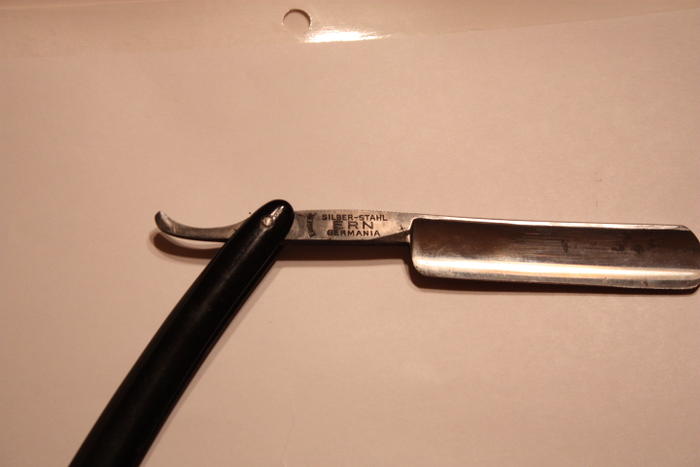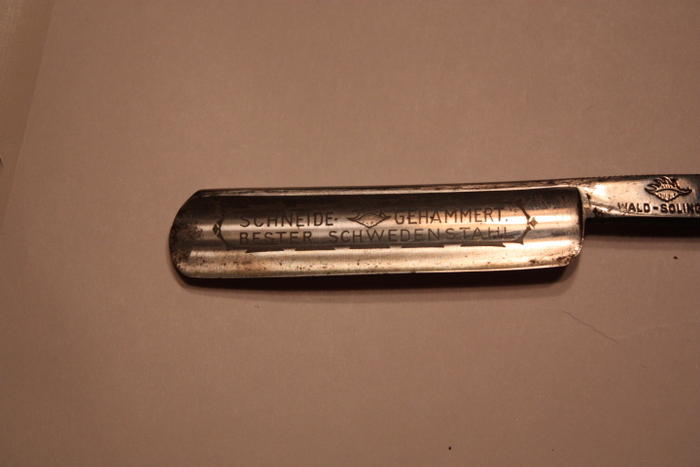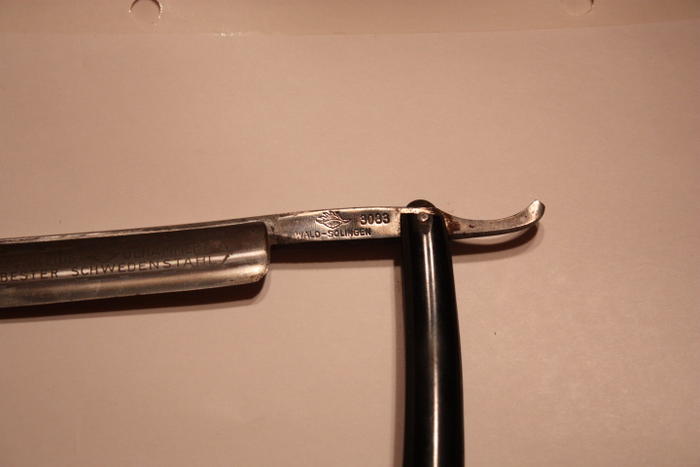Results 1 to 10 of 13
Threaded View
-
09-22-2011, 02:01 AM #1Civil War Re-enactor

- Join Date
- Apr 2011
- Posts
- 1
Thanked: 0 Please help Identify this Razor Marked Schneide Gehammert
Please help Identify this Razor Marked Schneide Gehammert
I picked up the razor at a gunshow for $20 and wonder if it is worth it. have found only 1 example of it on the internet on e-bay for $50. I can find no other information
is has Schneide Gehammert Bester Schwenden Stahl on the blade, Wald Soligen 3083, a shell stamp, and Eingetr. Silber Stahl ERN Germania on the tang



Thanks


 2Likes
2Likes LinkBack URL
LinkBack URL About LinkBacks
About LinkBacks






 Reply With Quote
Reply With Quote